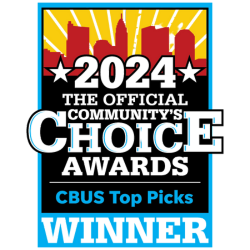A split air conditioner is an increasingly popular type of cooling system that allows for more flexibility and efficiency compared to traditional ACs. This guide will explain what a split air conditioner is, how it works, the pros and cons, and what to consider when installing one in your home.
How Does a Split AC System Work?
A split-type air conditioner consists of two main parts – an outdoor compressor/condenser unit and a separate indoor unit with an evaporator coil and blower. The units are connected by refrigerant lines that allow the refrigerant to travel between them.
The compressor pressurizes the refrigerant gas, which condenses it into a liquid in the outdoor coil while releasing stored heat outside. The liquid refrigerant then goes through an expansion device and evaporates back into a cool gas in the indoor unit’s evaporator coil while absorbing heat from the inside air. This cooled air is circulated by the blower.
This heat transfer process between the indoor and outdoor units effectively pumps heat outside, leaving cooled air for indoor comfort.
Types of Split Air Conditioners
Wall Mounted
Wall-mounted split units are designed for home cooling small to medium-sized rooms between 100 and 400 square feet. The indoor air evaporator unit is compact and lightweight and mounts high up on a wall of the room. This allows for the unit to be out of the way and frees up window space.
Wall units have capacities ranging from 9,000 to 18,000 BTU. They can effectively lower temperatures and remove humidity from areas like bedrooms, offices, and dens thanks to efficient inverter compressors.
Some wall split ACs offer basic smart features like WiFi control. Wall installation is considered DIY-friendly, with two accessible refrigerant line connections and a separate power cable needed to link the indoor and outdoor units.
Floor Mounted
Floor-mounted split system units place the evaporator on top of a freestanding pedestal that sits on the floor rather than mounts on the wall. These units have a slim profile and can better handle larger rooms between 400 and 1,000 square feet due to higher BTU capacities from 18,000 to 36,000. The indoor units feature an adjustable louver design that lets users redirect airflow around the room.
Floor units work well in open floor-plan living spaces, retail stores, and classrooms and allow flexible placement. The floor-mounted systems still offer simple installation, though the units themselves tend to be heavier at over 100 pounds.
Ducted
Ducted traditional split systems connect the indoor evaporator coil to existing ductwork in a home, distributing cooled air through vents in different rooms, similarly to central ACs. This allows for even cooling distribution rather than a single-point source.
Ductless mini split systems, on the other hand, do not require any existing ducts and are self-contained systems. The indoor wall or ceiling-mounted units cool individual rooms with tubing running through small holes to the outside condenser. Mini-splits are easy to install in homes without ductwork.
Ducted units range from 9,000 BTUs for zoned areas up to 60,000 total BTU output for whole homes exceeding 2,000 sq. ft. With smart controls, homeowners can customize each area’s temperature.
Because they integrate with ductwork, professional installation is recommended for ducted split air conditioning systems. This allows proper duct assessment and fan integration to optimize airflow and system performance.
Multi-Split
Multi-split air conditioners allow a single outdoor condenser and compressor to connect up to 5 indoor evaporator units, typically a mix of wall, floor, and ducted units. This is useful for cooling multiple zones like separate bedrooms, living rooms, and kitchens. It provides more customized comfort than central air systems. Each indoor unit features its own temperature control and can be turned off independently.
With the right combination of units, multi-split systems can handle homes between 1,500 and 3,500 square feet. The main limitation is that the total BTU capacity between all combined indoor units should not exceed 130% of the outdoor unit’s rated capacity. The units require professional design and installation of an intricate refrigerant distribution system.
Compared to alternatives, multi-split ACs provide the highest level of climate control flexibility.
The Proper Size Split AC for Your Space
Choosing the properly sized unit for your space is important for efficiency and effectiveness. An HVAC professional can recommend the ideal BTU capacity, but the general range you need depends on the region and room(s) being cooled. Expect installation costs for split HVAC systems to range from $300 up to $1,500, depending on system complexity.
The Logan Difference
Family-owned since 1969, Logan A/C & Heat brings an unmatched personal touch to HVAC installations and service. Our technicians complete extensive training to provide precise, efficient climate comfort solutions. We verify we have all necessary parts before your installation date to ensure a smooth, frustration-free process.
Our experienced install managers average fifteen years of field expertise supervising hundreds of residential setups. They ensure every technician completes a 30-point quality checklist for each mini split, central air system, or commercial installation. We will walk you through the completed system to validate full functionality before we leave.
At Logan A/C & Heat, taking care of customers also means taking care of our community. We frequently donate to nonprofits and volunteer to install AC units for neighbors in need. Contact us to schedule your system installation, replacement, or repair and experience the Logan Difference!
Frequently Asked Questions (FAQs)
Are split ACs better than window ACs?
Yes, split type air conditioners are more efficient, quieter, provide humidity control, allow for zoning, and are easier to install than window units. But window ACs cost less upfront.
Do split air conditioners need maintenance?
You should clean the air filters a few times per year. Annual checkups by HVAC contractors are recommended to clean coils, check refrigerant levels, and ensure proper performance.
What are the disadvantages of a split AC unit?
The upfront cost is higher than window units. Installation must be done by a professional. Refrigerant leaks are possible over time, requiring repairs.
What size split AC do I need?
A professional HVAC provider should calculate the ideal BTU output you need based on factors like your region, room size, and insulation. For example – a master bedroom may need 9,000 to 12,000 BTU. A living room could need 18,000 to 24,000 BTU.
How long should a split air conditioner system last?
With proper installation and maintenance, the expected lifespan of a split system air conditioner is approximately 10-15 years. The compressor and coils have warranties averaging 5-10 years.




















